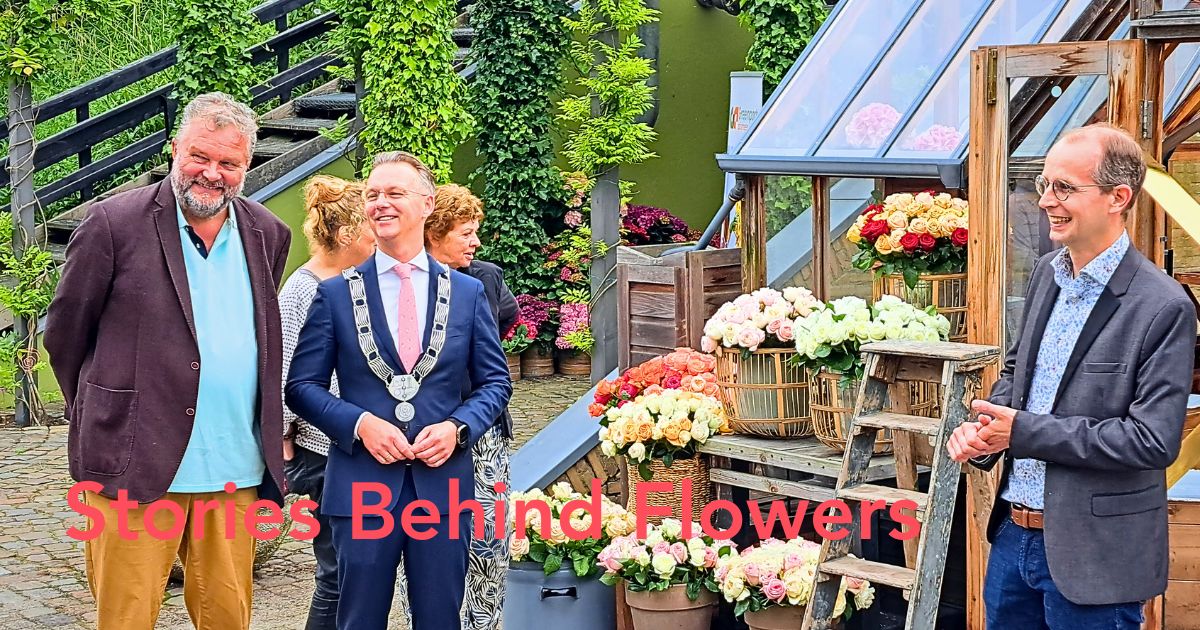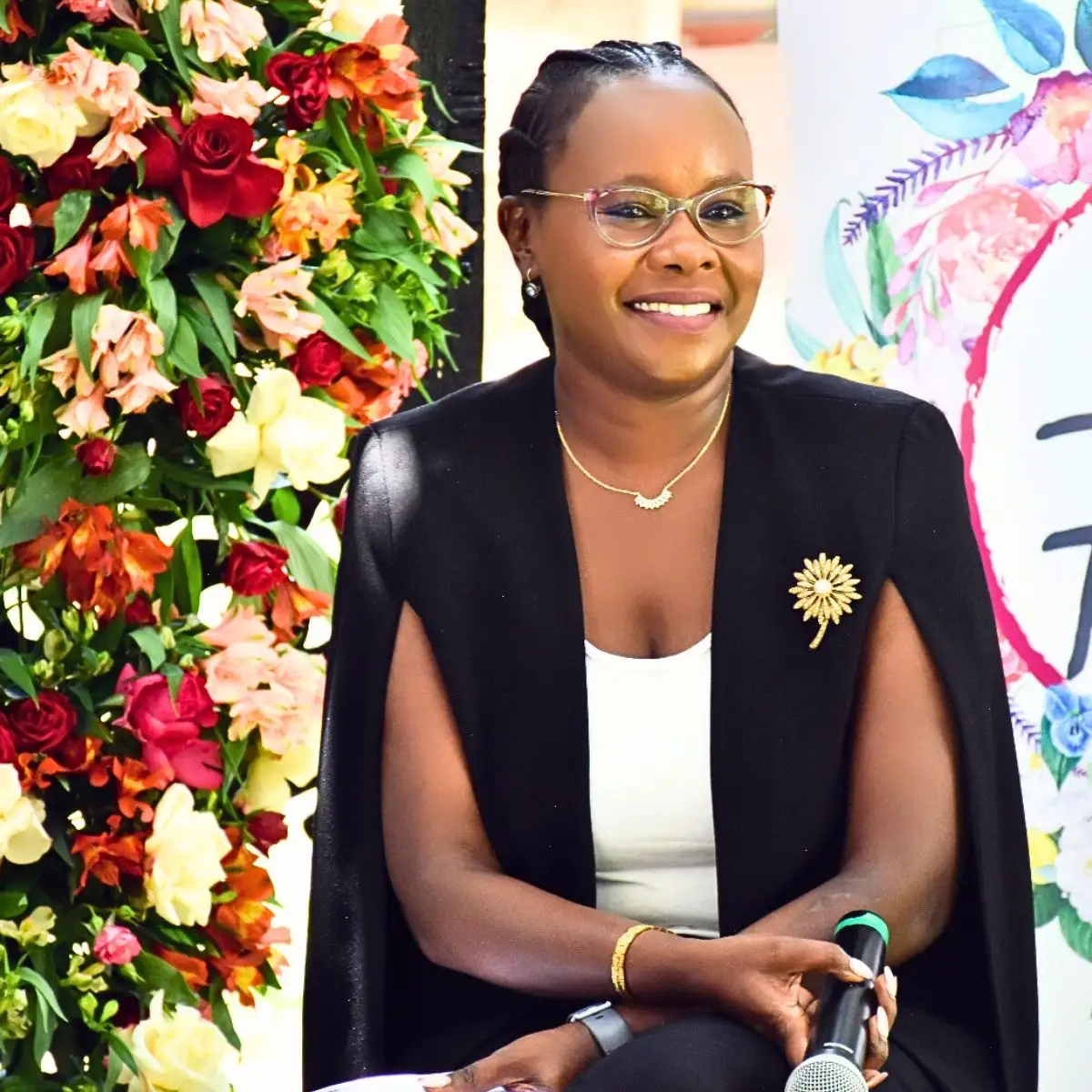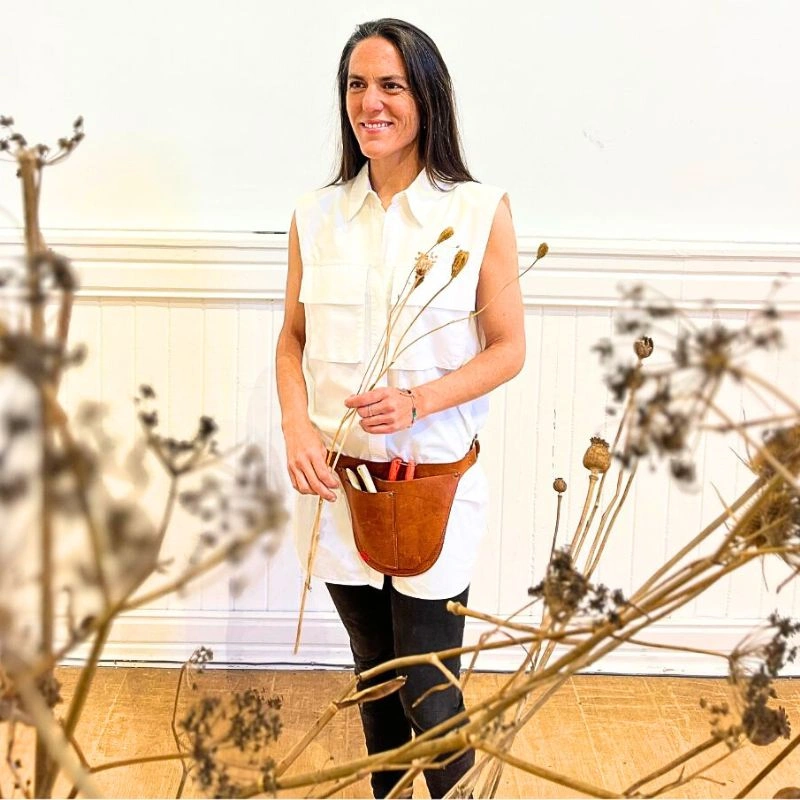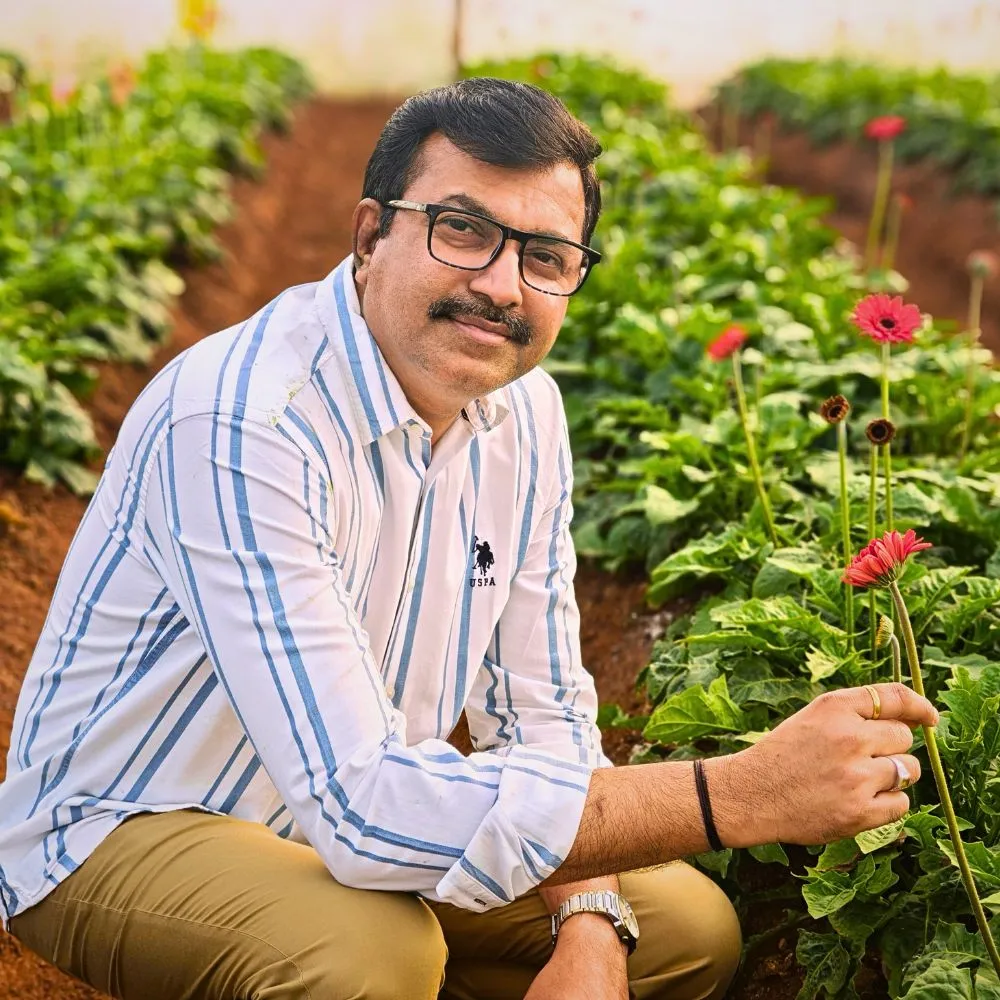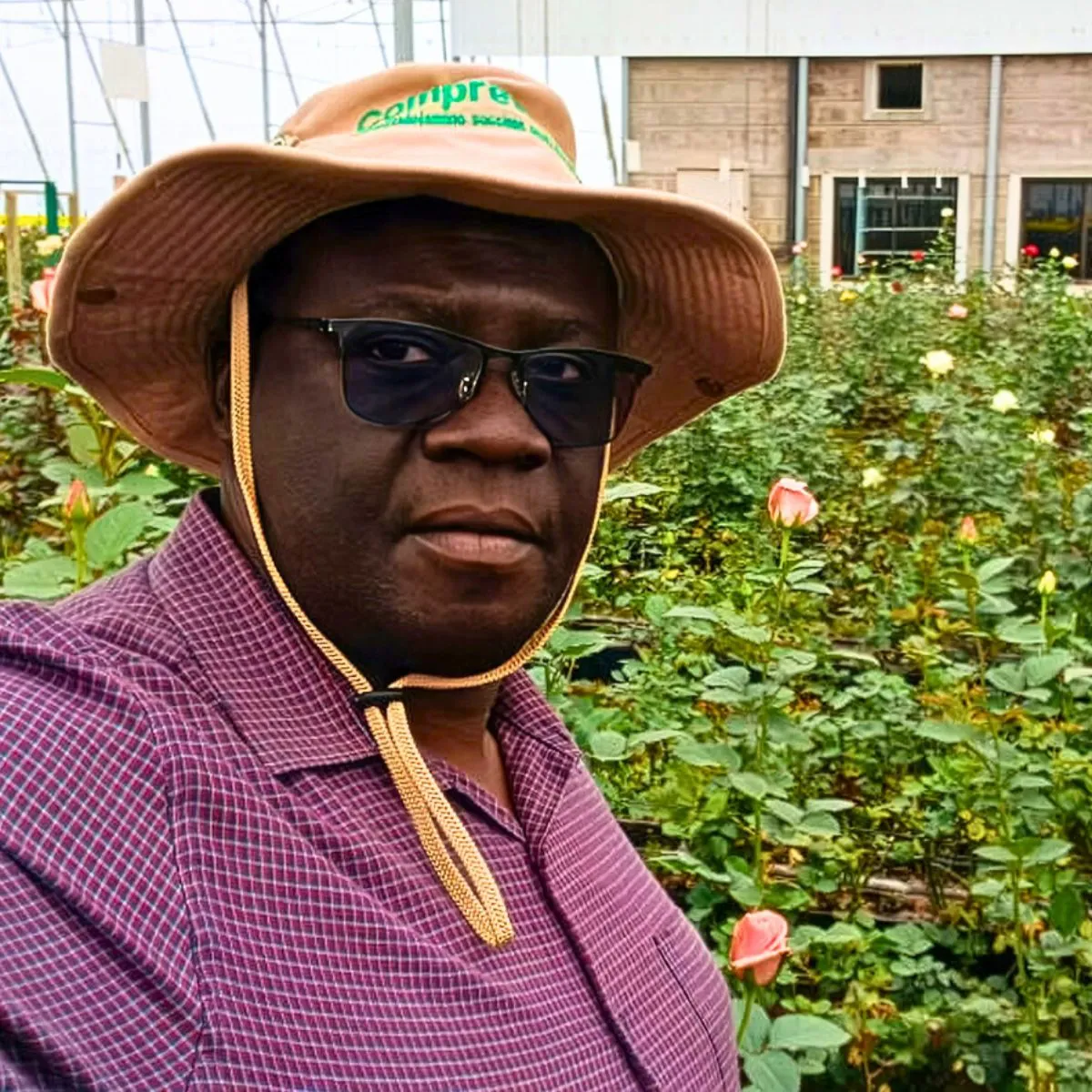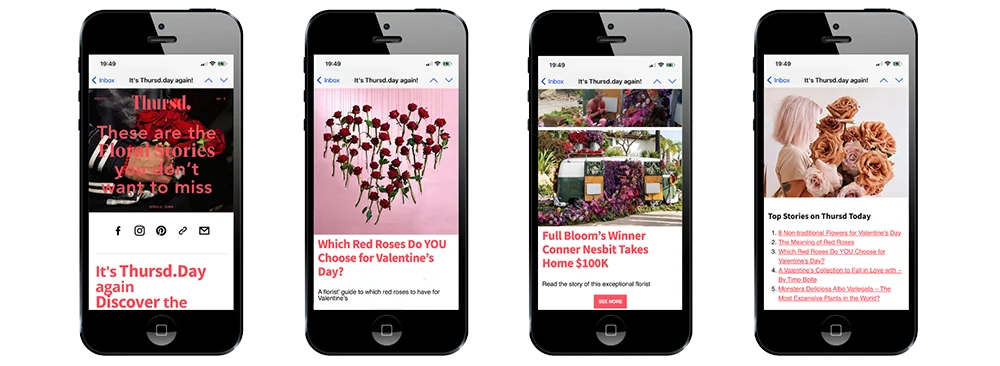Few people in the flower industry have witnessed its transformation as closely or contributed to it as passionately as Jan de Boer. With over four decades of experience spanning breeding, export, storytelling, and advocacy, Jan has built a career rooted in both creativity and connection. From growing up among flower fields in the Netherlands to building bridges between growers, traders, and consumers across continents, his story is one of evolution, purpose, and enduring curiosity.
As the founder of Florapodium and The Tiny Flowerboat at Barendsen, Jan has championed a more human side of floriculture, one that values stories as much as stems and the bottom line. In this week’s 10 questions, he reflects on a lifetime of lessons: what makes quality stand out, why emotion matters more than ever in today’s market, and how the future of flowers depends on rekindling the very thing that drew him in, communicating the stories and emotion behind every flower.
Question 1
For those who don’t know you, who are you and what do you do?
"I am a passionate flower man who knows the industry from breeding to the consumer. My parents moved from dairy farming into flower production, and I grew up surrounded by flowers. When I was seven years old, I already knew I wanted to be a grower. The first catalogs of summer flowers were under my pillow. Over time, I realized I wanted to see more of the world. During and after floriculture college, I worked in the United Kingdom, the United States, Italy, Spain, and spent some years in Switzerland. Working for HilverdaFlorist as a sales representative for Central and South America and Spain taught me how to build and maintain relationships while staying close to the business.
Living as a Dutchman in New York helped me understand people from many different backgrounds, which has shaped me for over forty years. I have learned that life and business never stay the same, so staying open to new experiences is essential. Spain and Italy taught me how to work and enjoy life at the same time, while the United Kingdom reminded me that the Dutch are not the only ones who can do things right. I met my wife Andrea at HilverdaFlorist, where she supported the board and the marketing team. Together we have two daughters, Luca and Pam, and we are now proud grandparents to our granddaughter Maud."

Question 2
What is so special about your job?
"As a flower exporter at the higher end of the market, quality and service mean everything. I have always defended niche products because they bring a different look and feeling compared to mass flowers. One small box of Braun tiny tomatoes can make a truck full of standard tomatoes look completely different, and it is the same with flowers.
I believe in adding color and story to the business. That is why I have invested time and energy in the more creative and entertaining side of the industry, and sometimes even in the political side, to promote diversity and to give people options beyond the standard. While I respect large-scale production and certification, I believe our products need memorable storytelling.
At Barendsen I created Florapodium and the Tiny Flowerboat, two ideas that brought storytelling and human connection to life. They were not just about saying hello, but about real conversations at the kitchen table that help people connect.

Question 3
Are there any specific challenges or obstacles you’ve faced in your job, and how did you overcome them?
"Like everyone, I have had both good and difficult times. One of my biggest challenges was balancing the hard figures in Excel with the creative joy of working with flowers. A strong business foundation is important, but when things are stable, there is a risk of losing the creative spirit.
Often, the emotional and artistic value of flowers is not fully understood in business-to-business relationships where money and volume dominate. I have worked hard to bridge that gap and to keep creativity alive while leading a company. Without that creative side, more can easily become less."
Question 4
What are the threats in the industry, and if so, do you have any solutions for them?
"I believe flowers will always be in demand, but many people today have other financial priorities. Most consumers in Europe are facing rising living costs, which means flowers are not always a top priority. You cannot expect someone to buy a car when they can barely afford a bicycle. On the production side, larger scale often lowers the cost per stem, but selling too much at low prices damages the market. Flooding auctions with excess product destroys value. Offering thousands of commercial rose varieties makes the final consumer lose connection with the higher end of the market.
The car industry shows a good example. Concept cars at auto shows are not meant for sale, but they spark imagination and shape what consumers want. In flowers, we rarely do that. The magic is lost because we are too far from the end consumer. We need to find balance. Data and figures are important tools, but they should not make every decision. We must bring emotion and storytelling back to flowers and not rely only on sustainability claims or price competition. That is how we reconnect people to the true meaning of flowers."

Question 5
How has technology like e-commerce platforms or digital marketing affected your industry? Which strategies have you employed to stay competitive?
"Technology has made many things easier, but not necessarily better. Webshops can make work lighter, but they do not make flowers more attractive. In retail and business-to-business relations, trust and personal contact still matter most.
Traditional wholesale is becoming weaker, and fewer specialists understand both sides of the business. We need a new generation of professionals who can communicate well, connect growers and clients, and understand the full chain.
Flowers are more than products; they are a way to communicate and to bring emotion. The future lies in solutions where people enjoy their work while helping customers grow stronger. Logistics should be a partnership focused on service, not just lower cost."

Question 6
Who (in or outside the floral industry) is an inspiring example to you? And Why?
"I admire people who dare to speak and to ask questions. For me, Belgian documentary maker Tom Waes is a great example. In his films, especially those about countries around the North Sea, he gives a voice to ordinary people who might not otherwise be heard. He asks questions and shows their stories with honesty and respect.
I also find inspiration from the flower growers I visit on Saturday mornings. When the week’s work is done and they gather for coffee, those conversations remind me why I love this industry. They are simple, hardworking people who truly care about what they do."
Question 7
How do you handle stress or difficult moments in your life?
"Everyone faces difficult times in life and in business. When something goes wrong or you lose someone, it helps to take a step back before reacting. I have learned that sleeping on it overnight often brings clarity. Talking to friends who have gone through similar experiences also helps.
Since stepping back from full-time work, I have realized that living without constant stress feels much better. It is about keeping perspective and not letting pressure take over your peace of mind."

Question 8
What has been the best (floral or non-floral) news for you lately, or of the last year?
"Becoming a grandfather has been the best news of the year. Spending more time at home, being with my family, and watching my granddaughter grow brings me great joy. It reminds me to slow down and to appreciate the small, beautiful moments of life."
Question 9
Which is your favorite flower and why?
"I love all kinds of flowers, but garden roses, tulips, lilacs, and peonies have a special place in my heart, each in its own season. Sometimes it is not about the flower itself, but about the color and the feeling it creates.
I enjoy placing flowers outside, photographing them in natural light, and capturing their quiet beauty. That simple act brings me happiness and peace."

Question 10
What are you doing this weekend?
"This weekend we are spending a few days at Cadzand Beach. My wife Andrea, our dog Jambo, and I will enjoy walking, biking, and breathing in the fresh air. After Cadzand we will travel to Naples and then to Valencia.
There is always something to talk about, and I feel grateful to still be part of the flower world. I love the people in this industry, and I often share their stories with my wife."

Jan de Boer’s story is a reminder that floriculture is not only about production, logistics, or trade. It is about people, emotion, and the stories that connect us to flowers and to each other. His decades of experience show how much the industry gains when creativity meets trade, and when passion is allowed to guide purpose.
If you found Jan’s story inspiring and would love to see more voices like his featured, we invite you to share your recommendations. Send us names of individuals or thought leaders you believe should be part of our upcoming '10 Questions' features. Write to edwin@thursd.com; your input helps us spotlight the stories shaping the floral world today.
Pictures by Jan de Boer.

